#plethodontidae
Explore tagged Tumblr posts
Text


Werler’s False Brook Salamander (Pseudoeurycea werleri), family Plethodontidae, Veracruz, Mexico
photographs by Bryce Anderson
5K notes
·
View notes
Text


California slender salamander (Batrachoseps attenuatus) in a redwood forest. Santa Cruz Mountains, California, US
#california slender salamander#Batrachoseps attenuatus#salamander#herps#not a bug#amphibian#Plethodontidae#nature#nature photography#biodiversity#animals#inaturalist#creature#redwood forest#honorary bug#cute animals#save the planet#herpetology#lizard#except not#macro photography#macro#forest#forest friends#forest floor#nature core#forestcore#nature aesthetic#leaves#california wildlife
1K notes
·
View notes
Text



Natural inspiration
Martha Muñoz has shown that organisms can influence their own evolution—a lesson she’s passing on to her students
The southern Appalachians are a diversity hot spot for these creatures (lungless salamanders), but many of the roughly 30 species of lungless salamanders here look similar. Their environment also seems uniform, at least at first glance—creating a puzzle about how so many species could have evolved. Muñoz suspects subtle differences in behavior or habitat may have driven the salamanders to diversify, and she wants to figure out what they could be. ... At Harvard, she worked with evolutionary biologist Jonathan Losos, whose research on Caribbean anoles has become a classic example of how evolution can follow a predictable path. For decades Losos and his students have studied lizards introduced to new islands, finding that when faced with similar challenges, these newcomers often adapt by evolving similar characteristics...
Read more: https://www.science.org/content/article/biologist-discovered-lizards-and-other-organisms-can-influence-their-own-evolution
#evolution#salamander#lizard#amphibian#reptile#anole#plethodontidae#animals#nature#science#herpetology#women in science
237 notes
·
View notes
Text

A northern slimy salamander (Plethodon glutinosus) in Sussex County, NJ, USA
by Alex Roukis
#northern slimy salamander#salamanders#amphibians#plethodon glutinosus#plethodon#Plethodontidae#urodela#amphibia#chordata#wildlife: new jersey#wildlife: usa#wildlife: north america
164 notes
·
View notes
Text

There are no salamanders living in the Caribbean today, but one tiny fossil shows that this wasn't always the case.
Palaeoplethodon hispaniolae was discovered in a chunk of amber from the Dominican Republic on the island of Hispaniola. The exact age of this type of amber is uncertain, but it most likely dates to the early-to-mid Miocene, about 20-15 million years ago.
The only known specimen is a hatchling, just under 2cm long (0.8"). It's unclear what its full adult size could have been, but based on its modern relatives it may have grown to anywhere between 4.5cm and 20cm long (~2-8").
Its strongly webbed hands and feet suggest it was very closely related to modern tropical climbing salamanders – but Palaeoplethodon had a unique webbing arrangement, with its feet relatively elongated and its hands fully fused into small rounded pads.
———
NixIllustration.com | Tumblr | Patreon
References:
Iturralde-Vinent, M. A., and R. D. MacPhee. "Remarks on the age of Dominican amber." Palaeoentomology 2.3 (2019): 236–240. https://doi.org/10.11646/palaeoentomology.2.3.7
Poinar Jr, G., and Wake, David B. "Palaeoplethodon hispaniolae gen. n., sp. n.(Amphibia: Caudata), a fossil salamander from the Caribbean." Palaeodiversity 8 (2015): 21-29. https://escholarship.org/uc/item/1f381770
Wikipedia contributors. “Bolitoglossa” Wikipedia, 18 Apr. 2024, https://en.wikipedia.org/wiki/Bolitoglossa
Wikipedia contributors. “Palaeoplethodon.” Wikipedia, 20 Nov. 2023, https://en.wikipedia.org/wiki/Palaeoplethodon
Wikipedia contributors. “Salamander.” Wikipedia, 7 June 2024, https://en.wikipedia.org/wiki/Salamander
#science illustration#paleontology#paleoart#palaeoblr#palaeoplethodon#plethodontidae#urodela#salamander#caudata#lissamphibia#amphibian#art#dominican republic#hispaniola#caribbean#the tree is vaguely a Hymenaea protera#which made the resin Dominican amber comes from#they're in danger :)
266 notes
·
View notes
Note
Red-backed salamander


#north american wildlife#red-backed salamander#redback salamander#eastern red-backed salamander#northern red-backed salamander#salamander#animal polls#poll blog#my polls#animals#polls#tumblr polls#amphibian#urodela#plethodontidae
48 notes
·
View notes
Text
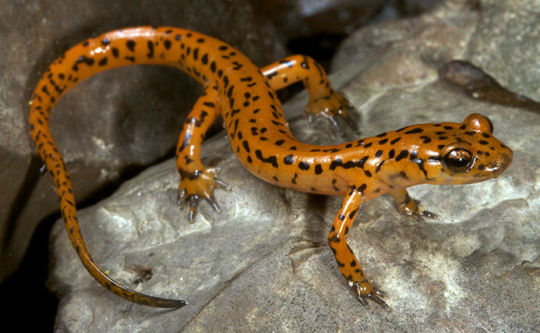

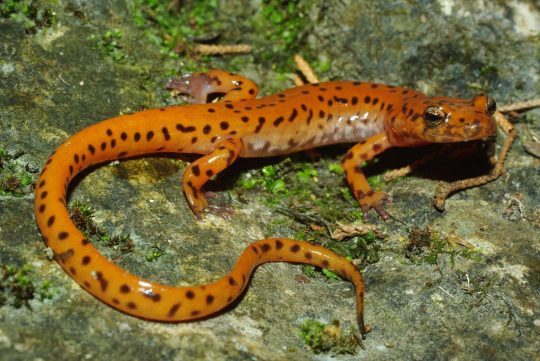
Shine a Light on the Cave Salamander
The cave salamander, also known as the spotted salamander (Eurycea lucifuga) is a species of salamander found throughout the eastern United States, particularly in the Appalachian mountains. As the name implies, they are most common in caves with exposed limestone or other calcifying rocks. However, they may also occur under rocks or logs, or in streams in deciduous forests; anywhere that's dark and moist.
The spotted salamander spends almost its entire life in these 'twilight zones'. Mating is believed to occur in summer or early fall, when male salamanders begin to seek out females by tracking their pheromones. Once a male finds a potential mate, he nudges her and rubs his chin on her head until she indicates she's receptive. At that point she straddles his tail while the two walk in tandem. The male then drops a spermatophore-- a sack full of sperm-- on the ground, and the female picks it up with her cloaca. The female lays a clutch of 5 to 120 eggs, but not until several months after fertilization between September and February.
The eggs take about 20 days to hatch, and larvae entirely aquatic, complete with gills and webbed fingers. Individuals can take anywhere from 6 to 18 months to fully develop, at which point they leave the water and become fully nocturnal. However, most individuals don't stray far from their original spawning territory, and adults do not maintain or defend set territories.
Despite their reclusive lifestyle, cave salamanders are quite striking. Adults are bright orange or red with black spots, and can be anywhere from 10 to 20 cm (4 to 8 in) in length. Over half of that length is taken up by the tail, and males have a longer tail than females. As lungless salamanders, E. lucifuga breathes through its skin and the tissues around its mouth-- while useful for an aquatic animal, this type of respiration makes it essential that the cave salamander remains in a wet environment.
Both larvae and adults are insectivorous, consuming a number of invertebrates including spiders, snails, beetles, earthworms, and ticks. Potential predators of the spotted salamander include bats, shrews, racoons, and snakes, though few specifics are known about the species' ecology. To deter these predators, E. lucifuga adopts a defensive posture in which they coil their body and wave their tail over their head. In addition, they secrete a foul-tasting substance from their skin, and their bright coloration likely warns potential predators that they won't make a good meal.
Conservation status: The IUCN has classified the cave salamander as Least Concern, although they are listed as Endangered in several of the American states in which they occur. The greatest threat to the species is thought to be human disturbance or habitat degredation from pollution of the water systems which flow through the caves where E. lucifuga resides.
If you like what I do, consider leaving a tip or buying me a kofi!
Photos
Todd Pierson
Michael Graziano
#cave salamander#Urodela#Plethodontidae#brook salamanders#lungless salamanders#salamanders#amphibians#caves#cave amphibians#north america#eastern north america#biology#zoology#ecology#animal facts
172 notes
·
View notes
Text

Yellow-eyed Ensatina
#yellow eyed ensatina#salamander#Ensatina eschscholtzii xanthoptica#Ensatina eschscholtzii#Amphibia#Urodela#Plethodontidae#Plethodontinae#Ensatina#upl
42 notes
·
View notes
Text


Absolutely stunning photo set captured by my aunt, modeled by me (and the flying salamander)
#not totally positive on this guy’s species but i think he’s an eastern redback#zoology#herpetology#amphibia#urodela#caudata#plethodon cenerus#plethodontidae#salamander#woodland salamander#not art
12 notes
·
View notes
Text
10/5/24
4 notes
·
View notes
Text
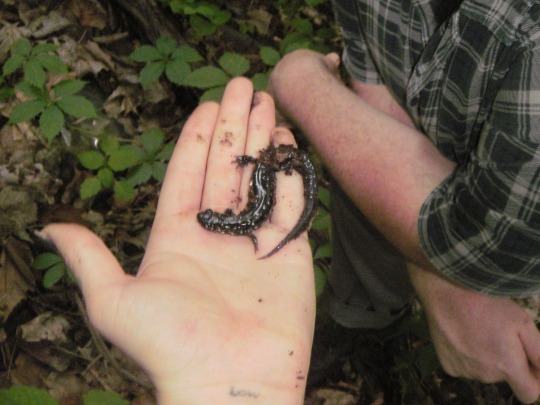

Northern Slimy Salamander (Plethodon glutinosus)
118 notes
·
View notes
Text

Robust Climbing Salamander (Bolitoglossa robusta), family Plethodontidae, Tapanti National Park, Costa Rica
Photograph by Piotr Naskrecki
#climbing salamander#arboreal salamander#salamander#bolitoglossa#bolitoglossine#plethodontidae#amphibian#herpetology#animals#nature#central america
10K notes
·
View notes
Text
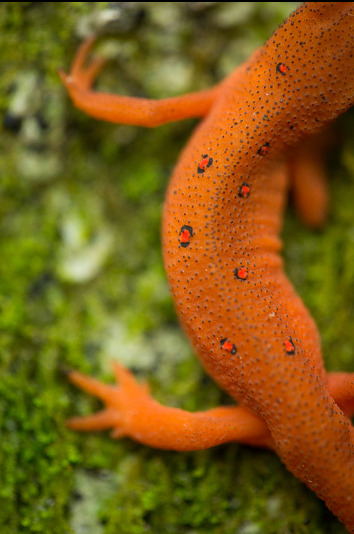
"Body Language" by Mac Stone
#salamander#red salamander#orange#red#amphibians#amphibia#pseudotriton#pseudotriton ruber#plethodontidae#animals
25 notes
·
View notes
Text
we found all seven of these under one log

#salamanders#herping#herpetology#plethodontidae#plethodon cinereus#red backed salamander#ambystoma maculatum#spotted salamander
12 notes
·
View notes
Text

A red legged salamander intergrade (Plethodon shermani int. Plethodon teyahalee) in Nantahala National Forest, North Carolina, USA
by Alan Cressler
#red legged salamander#southern appalachian salamander#salamanders#amphibians#plethodon shermani#plethodon teyahalee#plethodon#Plethodontidae#urodela#amphibia#chordata#wildlife: north carolina#wildlife: usa#wildlife: north america#intergrade species
343 notes
·
View notes
Text
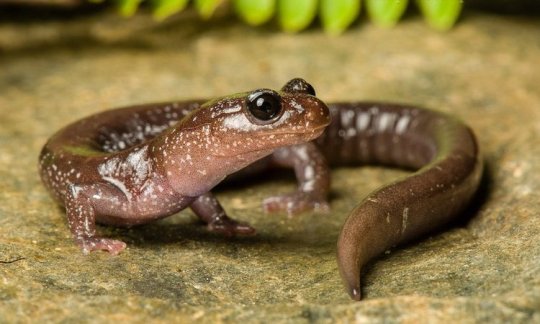
#1 to me. siskiyou mountains salamander (Plethodon stormi)
2 notes
·
View notes